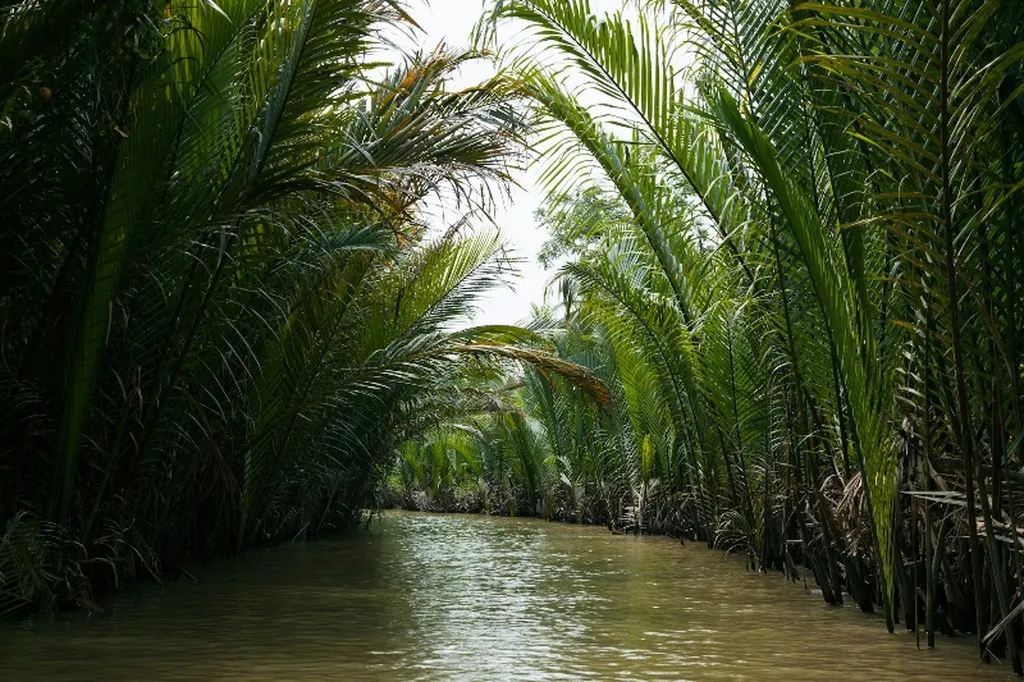In the heart of Vietnam’s Red River Delta, a silent threat looms over agricultural lands: soil salinity. As global warming and sea levels rise, this environmental menace could reshape the region’s agricultural landscape and food security. However, a recent study led by H. D. Nguyen from the Faculty of Geography at VNU University of Science, Vietnam National University, offers a glimmer of hope. By harnessing the power of machine learning and remote sensing, Nguyen and his team have developed a novel approach to predict soil salinity and assess farmers’ adaptive capacity, potentially revolutionizing how we combat this pressing issue.
The research, published in the journal *Natural Hazards and Earth System Sciences* (translated from Vietnamese as “Tự nhiên và Kỹ thuật Địa cầu”), combines advanced technologies and socio-economic surveys to create a comprehensive framework for managing soil salinity. “We aimed to design a theoretical framework that not only predicts soil salinity but also evaluates the adaptive capacity of farmers,” Nguyen explains. This dual approach is crucial for proposing targeted measures to mitigate the socioeconomic effects of soil salinization.
The team employed machine learning algorithms, including XGBoost (XGB) and various optimization algorithms like Pelican Optimization Algorithm (POA) and Siberian Tiger Optimization (STO), to analyze data from Sentinel 1 and 2A satellites. The results were impressive, with the XGB-POA model achieving the highest accuracy, boasting an R² value of 0.968. “All optimization algorithms successfully improved the accuracy of the XGB model,” Nguyen notes, highlighting the potential of these advanced technologies in environmental monitoring.
The study’s findings paint a clear picture: coastal and riverside regions are the most affected by soil salinity. Moreover, the research underscores the importance of human and financial resources in enhancing farmers’ adaptive capacity. By identifying the key factors influencing farmers’ ability to adapt, policymakers and agricultural stakeholders can develop more effective strategies to support sustainable farming practices.
The implications of this research extend far beyond the Red River Delta. As climate change continues to exacerbate environmental challenges, the integration of machine learning, remote sensing, and socio-economic surveys could become a blueprint for soil salinity management worldwide. “This study provides a key theoretical framework that can assist policymakers and farmers in managing land resources more effectively,” Nguyen states, emphasizing the broader applications of their work.
For the energy sector, understanding and mitigating soil salinity is crucial. Saline soils can impact bioenergy crop productivity, affecting the supply chain for biofuels. By accurately identifying affected areas and enhancing farmers’ adaptive capacity, this research could support the development of sustainable bioenergy projects, ensuring a stable supply of feedstock for biofuels.
Furthermore, the study’s interdisciplinary approach highlights the need for collaboration between technologists, agronomists, and policymakers. By bridging the gap between advanced technologies and practical applications, this research paves the way for innovative solutions to environmental challenges. As we grapple with the realities of climate change, such integrated approaches will be vital in safeguarding our agricultural systems and ensuring food security for future generations.
In the words of Nguyen, “This research highlights the importance of integrating machine learning, remote sensing, and socio-economic surveys in soil salinity management, which can support farmers for sustainable agricultural development.” As we look to the future, the lessons learned from the Red River Delta could very well shape the next generation of environmental monitoring and management strategies, offering hope in the face of a changing climate.

